#Agricultural Seeds
Text

#garlic#seeds#seed#agriculture#backyard#gardening#garden#fruit#vegetables#herbs#herb#foods#foodie#foodporn#food photography#foodgasm#food#ausgov#politas#auspol#tasgov#taspol#australia#fuck neoliberals#neoliberal capitalism#anthony albanese#albanese government#sesame seeds#chia seeds
53K notes
·
View notes
Text
Find out the exclusive guide on selecting the perfect seeds for your region. Discover expert tips, proven strategies, and essential insights to cultivate a thriving garden suited to your local climate and conditions.
0 notes
Text
#quality seeds#buy agricultural seeds#agricultural seeds#buy quality seeds#buying quality seeds online
0 notes
Text
The Science of Seed Selection: How to Choose the Right Seeds for Your Crops
Seed selection plays a crucial role in agriculture, as it simultaneously affects yields and profits. Informed selections during seed choice are essential to maximizing yield capacity and ensuring pleasant crop production. In seed selection, Yara, a main agricultural solution company, provides precious assets and know-how to assist farmers in making informed alternatives. Yara acknowledges the importance of seed selection for premier manufacturing and gives various seed solutions desirable for specific crop requirements. Partnering with seed breeders and vendors, they produce certain high-quality seeds in line with present day agricultural practices.
Importance of Seed Selection in Agriculture
Seed selection is an important step in agriculture as it determines genetic ability and crop performance. Superior yields have suitable tendencies, inclusive of sickness resistance, progressed yield, and environmental pressure tolerance. By choosing the proper seeds, farmers can optimize their possibilities for better yields, higher advertising, and advanced income.
Additionally, the choice of cultivars and hybrids guarantees their first-class performance under specific climates and growing situations. Seed selection is the foundation for successful crop production, permitting farmers to take advantage of advances in plant breeding and genetics to fulfill the needs of a rapidly growing agricultural enterprise.
Role of Genetics and Seed Quality in Crop Production
Genetics and seed excellence have a big effect on crop production. Genetic tendencies impact traits, which include yield, pest and ailment resistance, adaptation to different climatic situations, and ordinary plant vigor. Quality seed is produced via careful breeding, checking out, and seed remedy to ensure uniformity, purity, and dietary quality. Such good quality seeds provide a full life crop start, taking into consideration perseverance in germination, vigorous early growth, and exact plant establishment. By choosing best quality seeds with the right genetic material, farmers formulate strategies for successful crop production, allowing flora to attain their full ability and perform the favored features of the subject
Types of Organic Fertilizers and Their Benefits
Organic seeds and fertilizers offer a more sustainable and environmentally pleasant way to develop plants. They are derived from natural sources, including plant and animal dependencies, compost, and manure. Common organic substances include compost, crimson meal, bone meal, fish scraps, and green waste. These chemical substances offer crucial vitamins to vegetation, at the same time enhancing soil fertility, structure, and water retention.
Unlike fertilizers, fertilizers release nutrients slowly, balancing plant growth and lowering nutrient absorption. They additionally beautify soil microbial activity, keeping soil ecosystems healthy. The integration of organic fertilizers into agricultural practices contributes to higher soil fitness, reduces the environmental footprint, and contributes to the long-term sustainability of the plants produced.
Factors to Consider When Choosing Seeds
Several elements must be taken into consideration while deciding on the best seeds for crops.
Environmental factors, which include weather, soil conditions, and water availability, play a critical role in achieving the most efficient yield.
To ensure the finest boom and yield, plant seeds need to be selected based totally on their suitability for precise environmental situations. In addition, it's essential to remember the kind of crop and the target market.
Different crops have unique wishes and marketplace requirements that have an effect on seed choice.
Farmers ought to additionally examine suitable crop traits, which include yield capability, disorder resistance, marketplace choices, and many others, to maintain their production goals.
The Importance of Making Informed Choices
Informed choices throughout seed selection are paramount to maximizing yield and profitability. By thinking about factors inclusive of genetics, yield quality, environmental suitability, and market demand, farmers can pick agricultural seeds that meet their production dreams and ensure excessive overall performance. Seeds' knowledgeable choice enables farmers to gain upgrades in plant breeding and genetics, resulting in stepped forward types and hybrids and suited developments that reduce crop failure, ailment outbreaks, and the hazard of market rejection.
By informing their seed choices, conducting research, seeking expert advice, and taking advantage of available sources, farmers could make knowledgeable decisions that improve their farming practices, boost yields, and aid their overall fulfillment and sustainability in their agricultural operations.
Conclusion
Seed choice is a science that requires careful consideration of genetics, seed high-quality, surroundings, and market demand. By understanding crop desires and making knowledgeable choices, farmers can enhance their production, maximize profits, and contribute to sustainable agriculture.
Choosing the best seeds is the inspiration for success, harnessing the energy of plant genetics to satisfy the challenges of dynamic and growing ecosystems in agricultural landscaping. By using Yara’s seed selection solutions, farmers can increase the yield, profitability, and sustainability of their plants. YARA’s commitment to innovation and sustainable agriculture is aligned with the aim of a knowledgeable desire for merchandise that causes green and environmentally friendly crop production.
0 notes
Text

Turnips grown in moulds.
#gardening#creative agriculture#looks at my mannequin#looks at pack of pumpkin seeds#goblincore#forestcore#goblim#goblin#goblin aesthetic#cottagecore#mosscore
6K notes
·
View notes
Text
"In response to last year’s record-breaking heat due to El Niño and impacts from climate change, Indigenous Zenù farmers in Colombia are trying to revive the cultivation of traditional climate-resilient seeds and agroecology systems.
One traditional farming system combines farming with fishing: locals fish during the rainy season when water levels are high, and farm during the dry season on the fertile soils left by the receding water.
Locals and ecologists say conflicts over land with surrounding plantation owners, cattle ranchers and mines are also worsening the impacts of the climate crisis.
To protect their land, the Zenù reserve, which is today surrounded by monoculture plantations, was in 2005 declared the first Colombian territory free from GMOs.
...
In the Zenù reserve, issues with the weather, climate or soil are spread by word of mouth between farmers, or on La Positiva 103.0, a community agroecology radio station. And what’s been on every farmer’s mind is last year’s record-breaking heat and droughts. Both of these were charged by the twin impacts of climate change and a newly developing El Niño, a naturally occurring warmer period that last occurred here in 2016, say climate scientists.
Experts from Colombia’s Institute of Hydrology, Meteorology and Environmental Studies say the impacts of El Niño will be felt in Colombia until April 2024, adding to farmers’ concerns. Other scientists forecast June to August may be even hotter than 2023, and the next five years could be the hottest on record. On Jan. 24, President Gustavo Petro said he will declare wildfires a natural disaster, following an increase in forest fires that scientists attribute to the effects of El Niño.
In the face of these changes, Zenù farmers are trying to revive traditional agricultural practices like ancestral seed conservation and a unique agroecology system.
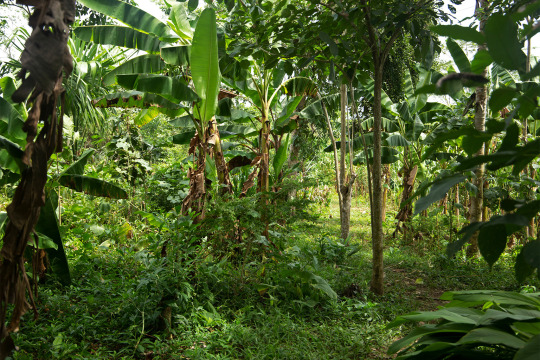
Pictured: Remberto Gil’s house is surrounded by an agroforestry system where turkeys and other animals graze under fruit trees such as maracuyá (Passiflora edulis), papaya (Carica papaya) and banana (Musa acuminata colla). Medicinal herbs like toronjil (Melissa officinalis) and tres bolas (Leonotis nepetifolia), and bushes like ají (Capsicum baccatum), yam and frijol diablito (beans) are part of the undergrowth. Image by Monica Pelliccia for Mongabay.
“Climate change is scary due to the possibility of food scarcity,” says Rodrigo Hernandez, a local authority with the Santa Isabel community. “Our ancestral seeds offer a solution as more resistant to climate change.”
Based on their experience, farmers say their ancestral seed varieties are more resistant to high temperatures compared to the imported varieties and cultivars they currently use. These ancestral varieties have adapted to the region’s ecosystem and require less water, they tell Mongabay. According to a report by local organization Grupo Semillas and development foundation SWISSAID, indigenous corn varieties like blaquito are more resistant to the heat, cariaco tolerates drought easily, and negrito is very resistant to high temperatures.
The Zenù diet still incorporates the traditional diversity of seeds, plant varieties and animals they consume, though they too are threatened by climate change: from fish recipes made from bocachico (Prochilodus magdalenae), and reptiles like the babilla or spectacled caiman (Caiman crocodilus), to different corn varieties to prepare arepas (cornmeal cakes), liquor, cheeses and soups.
“The most important challenge we have now is to save ancient species and involve new generations in ancestral practice,” says Sonia Rocha Marquez, a professor of social sciences at Sinù University in the city of Montería.
...[Despite] land scarcity, Negrete says communities are developing important projects to protect their traditional food systems. Farmers and seed custodians, like Gil, are working with the Association of Organic Agriculture and Livestock Producers (ASPROAL) and their Communitarian Seed House (Casa Comunitaria de Semillas Criollas y Nativas)...
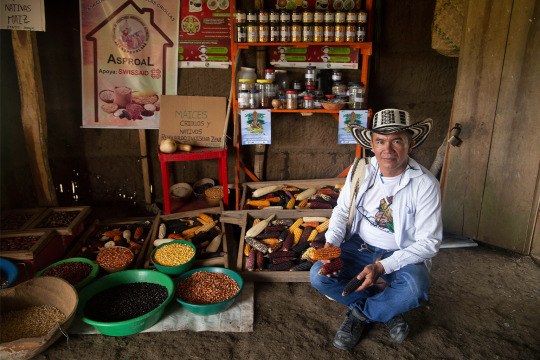
Pictured: Remberto Gil is a seed guardian and farmer who works at the Communitarian Seed House, where the ASPROL association stores 32 seeds of rare or almost extinct species. Image by Monica Pelliccia for Mongabay.
Located near Gil’s house, the seed bank hosts a rainbow of 12 corn varieties, from glistening black to blue to light pink to purple and even white. There are also jars of seeds for local varieties of beans, eggplants, pumpkins and aromatic herbs, some stored in refrigerators. All are ancient varieties shared between local families.
Outside the seed bank is a terrace where chickens and turkeys graze under an agroforestry system for farmers to emulate: local varieties of passion fruit, papaya and banana trees grow above bushes of ají peppers and beans. Traditional medicinal herbs like toronjil or lemon balm (Melissa officinalis) form part of the undergrowth.
Today, 25 families are involved in sharing, storing and commercializing the seeds of 32 rare or almost-extinct varieties.
“When I was a kid, my father brought me to the farm to participate in recovering the land,” says Nilvadys Arrieta, 56, a farmer member of ASPROAL. “Now, I still act with the same collective thinking that moves what we are doing.”
“Working together helps us to save, share more seeds, and sell at fair price [while] avoiding intermediaries and increasing families’ incomes,” Gil says. “Last year, we sold 8 million seeds to organic restaurants in Bogotà and Medellín.”
So far, the 80% of the farmers families living in the Zenù reserve participate in both the agroecology and seed revival projects, he adds."
-via Mongabay, February 6, 2024
#indigenous#ecology#agroforestry#agriculture#traditional food systems#traditional medicine#sustainable agriculture#zenu#indigenous peoples#farming#colombia#indigenous land#traditional knowledge#seeds#corn#sustainability#botany#plant biology#good news#hope#climate action#climate change#climate resilience#agroecology#food sovereignty
1K notes
·
View notes
Text

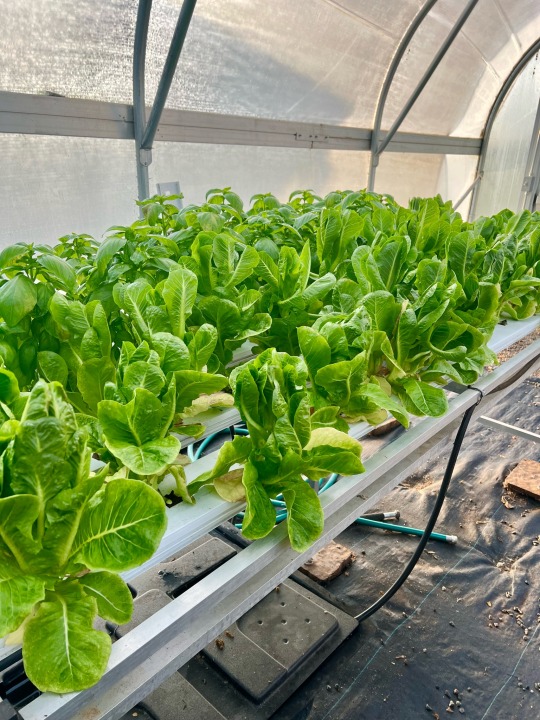
9/19/23 ~ Hydroponics at school. Those cucumbers grew super fast 😳 and some Romaine Lettuce!
#indoor garden#container gardening#sustainable gardening#vegetable gardening#starting seeds#grow organic#grow your own food#organic gardening#tomato garden#green witch#greenhouse#greenhouse nursery#plant nursery#hydroponics#growing cucumbers#romaine lettuce#sustainable agriculture
60 notes
·
View notes
Text
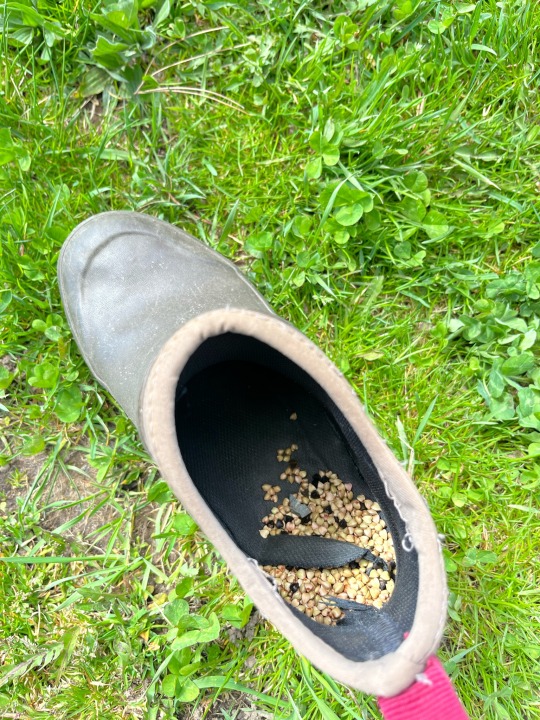
I left my boots in the barn over the winter and a very lucky mouse made an entire home in one of them 😂
#all those seeds#and no poop!#me#organic farming#solarpunk#community shared agriculture#csa farming#farming
10 notes
·
View notes
Text
When I head out to the ranch, and I see all these subdivisions building built, I can’t help but feel a little uneasy. Mostly because I know human existence is mostly dependent on that top six or so inches of soil which is now being covered up my poorly built homes and concrete.
Now don’t get me wrong, everyone deserves a home and agriculture isn’t perfect, far from it, but I can’t help wonder if a field being left fallow for a season, used as rangeland or growing newer hardier crops would be a better use and better for the environment over all.
#artemis speaks#just thoughts#those were family farms and ranches and now they're subdivisions of ugly houses that all look the same#and cows and deer will never graze there again#birds won't eat the seeds and bugs in the fields#agriculture#farmers#urban growth
12 notes
·
View notes
Photo
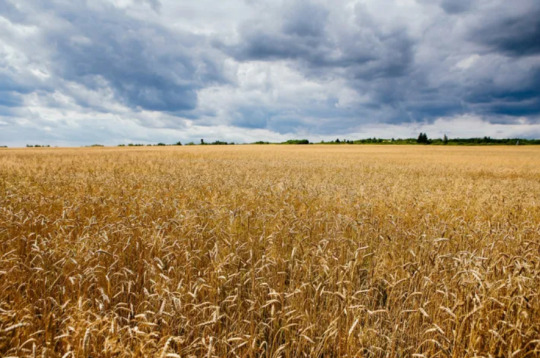
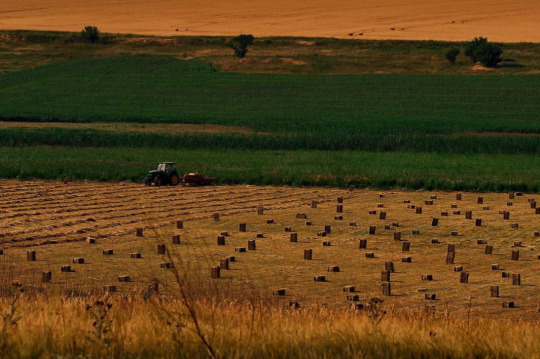


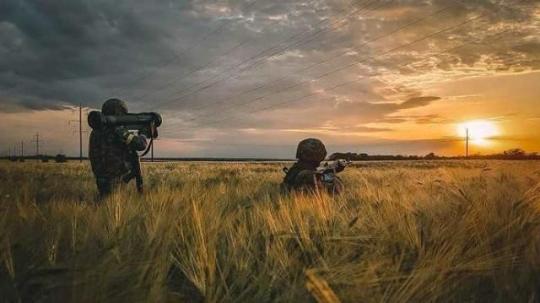


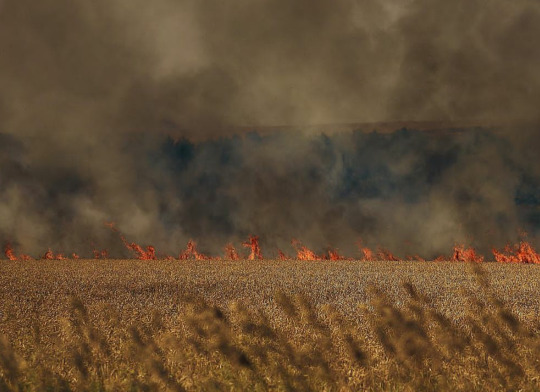

Charred wheat on Ukrainian fertile agricultural land
A wheat field is one of the Ukrainian symbols. Ears of wheat have long carried the energy of fertility and wealth. Almost 60 percent of the territory of Ukraine is covered with fields on which grain crops are grown. The quality and fertility of Ukrainian black soil (chernozemic soil) were once ‘confirmed’ by the Germans, who transported it in wagons from Ukraine during the Second World War.
Currently in the Ukrainian regions of Zaporizhzhya, Dnipropetrovsk, Kharkiv, Kherson and Donetsk the wheat fields are burning due to the explosions or the red-hot fragments of artillery shrapnel. With shelling Russia deliberately set wheat fields on fire, severely damaging crops.
The widespread destruction of the Ukrainian wheat fields that is under way now remains the Holodomor—the man-made famine orchestrated by Josef Stalin in the early 1930s to crush Ukrainian resistance to farm collectivisation. Stalin ordered the Soviet army to strip Ukrainian peasants of whatever food stores they had—even their pets. An estimated 3.9 million people died.
“The Russians are blowing up grain elevators. They are hitting cold storage facilities. There are even reports of them destroying farm equipment. There’s a very targeted approach to what they are doing.”
“Some people can’t fertilise their crop because the Russians are shooting everything that moves . There are reports of them mining the fields, the roads to the fields, not to mention a lot of unexploded ordinance and bodies in the fields. I think wheat yields will be on the floor—maybe a third or a quarter of what they’d normally be.” - Jonathan Clibborn, an Irish immigrant moved to Ukraine 15 years ago with just the shirt on his back, and now farms 3,000 hectares in the region west of Lviv, near the Polish border.
“Ukraine will not be able to plant corn. The winter wheat in the ground will not be fertilised, and the harvest sharply reduced. That’s a real danger. They are a country of 40 million people, but they produce food for 400 million. That’s the reality of a globalised world. We are all in this together.” - Arif Husain, chief economist at the UN World Food Programme.
source: https://www.nationalgeographic.co.uk/history-and-civilisation/2022
#ukraine#Europe#breadbasket#fields#wheat#agricultural#agronomy#seeds#exports#grains#invasion#distruction#devastation#war#wartime#land#Ukrainians#nations#harvest#stockpiles#Holodomor#resistance#fire#photojournalist#burning fields#soldiers#Charred#fields of grain#food crisis#food
391 notes
·
View notes
Text
Minnesota State Fair seed art.

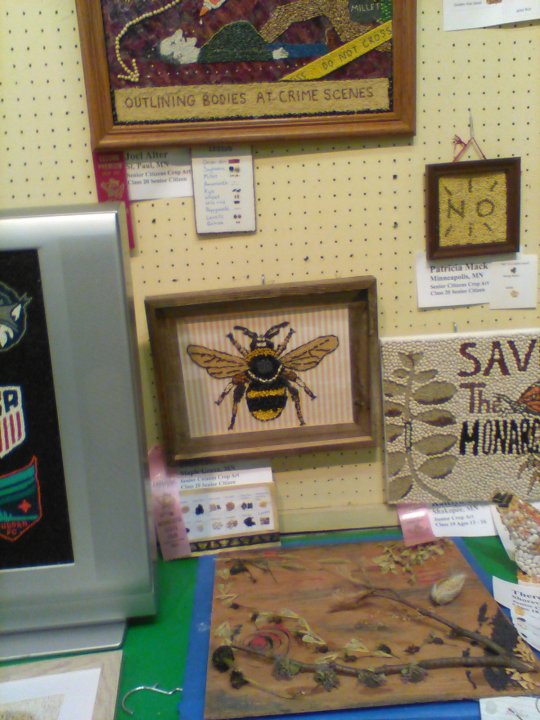













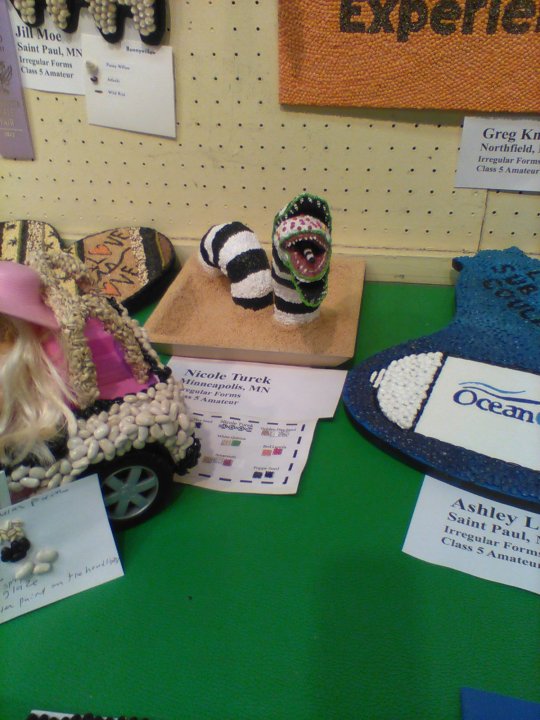



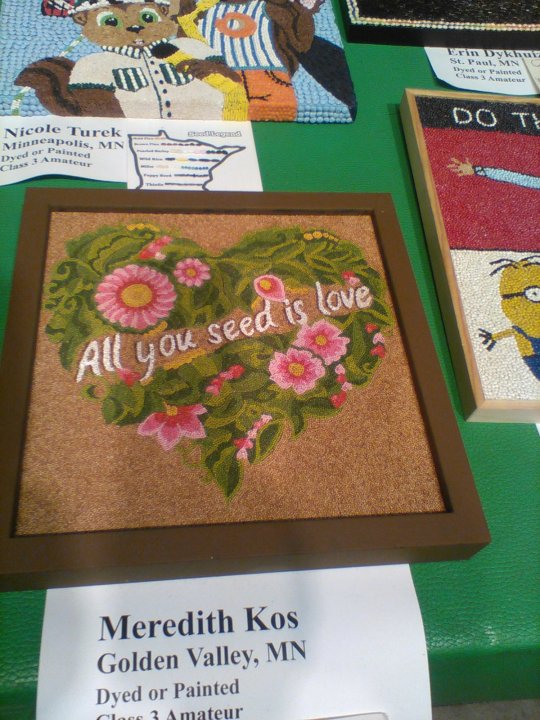






@arianatheangel-girl Here's the seed art photos I took. I didn't get all the art (too many, and some I didn't like), but this is most of it.
The last picture is of the art that was turned into this year's fair poster and t-shirt.
#Minnesota Fair#seed art#crop art#The Great Minnesota Get Together#Agriculture Horticulture Building#agricultural art#art#crafts#hobbies
20 notes
·
View notes
Text
Seeds are the origin of agriculture. Discover how seed companies are impacting the crop quality. Get a list of top 10 seed companies in India and their role in Indian agriculture.
0 notes
Text
#Seed#types of seeds#premium quality seeds#agricultural seeds#buy seeds online#agriculture technology#badikhetiindia#agritech
0 notes
Text
seeing people utterly fucking abuse corn makes me feel like im going insane
PEOPLE WILL GET THREE DINKY LITTLE CORN PLANTS AT THE GARDEN STORE, BURY THEM IN LIFELESS POTTING SOIL AND THEN ACT SURPRISED WHEN THEY START STRUGGLING
LIKE DUDE

DUDE

DUDE

CORN WAS NEVER A SOLITARY PLANT
IT'S BEEN CAREFULLY BRED AND DOMESTICATED OVER THOUSANDS OF YEARS TO HAVE A SYMBIOTIC RELATIONSHIP WITH ITS SISTERS AND YOU ARE DEPRIVING IT OF THAT AND THEN ACTING SURPRISED WHEN IT CANT GROW
PLEASE. IM BEGGING YOU. IM ON MY FUCKING KNEES. YOU HAVE COLONIST BRAINWORMS. STOP IT WITH THE MONOCULTURES.
PLANT SOME FUCKING BEANS AND SQUASH!!!!
AND STOP PLANTING THEM SO CLOSE TOGETHER.
#if you are indigenous please god add to this and i will reblog it with your input#also im gonna reblog with the more practical side of it since it's so much more than throwing seeds in a hole#three sisters#haudenosaunee#algonquin#cherokee#seneca#like so many first nations have dome this for thousands of years and we just act like corn can be grown in giant fields#i dont wanna culturally appropriate but it feels so weird how we take these plants that have been domesticated for thousands of years#and just seperate them#chopping what may as well be a composite organism into three pieces#three sisters should be standard agricultural practice#this isn't fucking past history or archeological knowledge this is HERE and NOW#gardening
3 notes
·
View notes
Video
n123_w1150 by Biodiversity Heritage Library
Via Flickr:
Our new guide to rose culture :. West Grove, Pa. :The Dingee & Conard Co.,1891.. biodiversitylibrary.org/page/43804417
#Bulbs (Plants)#Catalogs#Dingee & Conard Co#Flowers#Nurseries (Horticulture)#Nursery stock#Roses#Seeds#Trade catalogs#U.S. Department of Agriculture#National Agricultural Library#bhl:page=43804417#dc:identifier=http://biodiversitylibrary.org/page/43804417#bhlGardenStories#J. B. Varrone rose#Madame Baron Veillard rose#Augustine Guinoisseau#White La France rose#BHLinbloom#HistSciArt#taxonomy:genus=Rosa#taxonomy:common=rose#rose#rosa#AUGUSTINE GUINDISSEAU rose#MADAME BARON VEILLARD#J.B.VARRONE#flickr#cottagecore#flowercore
2 notes
·
View notes
Link
“Most people have heard of open source software, maybe also of open source beer (Free beer for all!) or open source pharmaceutical research. The principle is the same: Someone developed the seeds — for cowpeas, corn, rye and more — and now offers the resource for everybody to share.
Just like software development has been co-opted by a few global companies like Microsoft and Apple, the international seed development and trade, too, is controlled by a few big giants like Bayer (Monsanto), Corteva (DuPont) and ChemChina (Syngenta). A 2012 Oxfam study found that four companies dominate more than 60 percent of the global trade with grains.
When we buy cereal or bread, few pay attention to the fact that most grains are protected or even patented. Most farmers don’t own the seeds they sow on their fields. “They are renting them,” Kloppenburg, professor emeritus at the University of Wisconsin-Madison and co-founder of OSSI says with disgust. The problem with that? “A few global companies have the monopolies on global seed trade, and they breed cash crops like corn and soy, purely for money. They don’t care about biodiversity, world hunger or about the small farmer.” What sounds like a business problem impacts everybody, Kloppenburg insists. “These few gene giants on top of the food chain decide what ends up on our plates.”
In 2012, Kloppenburg and half a dozen like-minded agriculture experts founded OSSI as an alternative to the monopolies. OSSI’s aim is the “free flow and exchange of genetic resources, of plant breeding and variety development,” Kloppenburg says. With global warming, disease and changing climatic patterns, “we need novel plant varieties that are capable of responding to the changes. Farm to table is popular, but we really need to talk about seed to table.”
The movement faces an uphill battle, particularly in the US where most farmers plant seeds that are patented by the big corporations. Still, about 50 seed breeders have already signed on with OSSI in the US to offer nearly 500 seed varieties. And other open source seed organizations are making their own way in Europe, Argentina, India and more...
Of course, salad is no software, and the work of plant breeders has to be protected. Otherwise they might fare like plant breeder Jim Baggett in Oregon, who in 1966 started breeding broccoli with an extra-long stem so it could be harvested more easily. He shared his novel broccoli with researchers and other breeders — until Monsanto-offspring Seminis patented a broccoli with exactly that trait in 2011. Baggett could trace more than a third of the plant material to his work...
Seed breeders who commit to the OSSI pledge allow buyers to use what they have developed however they like. The pledge reads: “In return, you pledge not to restrict others’ use of these seeds or their derivatives by patents or other means, and to include this Pledge with any transfer of these seeds or their derivatives.
Examples of OSSI varieties include dwarf tomatoes, bred for people with little space by small farmers in North Carolina and Australia who worked together and exchanged information across continents. A new rye, called Baldachin, has been developed with the help of crowdfunding in Germany specifically for the sandy soil in East Germany and is for the first time available in bakeries this fall. Also potatoes, corn, wheat and nearly everything else you need to cook dinner...
Just like software, “we want to go viral,” Kotschi says. In North America, he notes, cannabis breeders are interested in the OSSI strategy. “Cannabis is going to be a multibillion dollar market,” he says. “The small breeders fear for their seeds. They are interested in using the open source license to protect themselves while making the seeds available to others.”” -via Reasons to Be Cheerful, 10/14/22
#monsanto#genetics#patent#big ag#big agriculture#open source#plant breeding#farm to table#seeds#cannabis seeds#cannabis#ossi#good news#hope
109 notes
·
View notes
